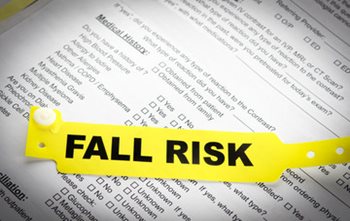
Fall Prevention: A Best Practice Approach
Within acute care hospitals and long-term care facilities (e.g., nursing homes and assisted living centers) falls constitute the single largest category of adverse events. Anywhere from 39%-50% of patients (*) experience one or more falls. Falls are associated with significant physical and psychological complications, including:
- Injury (i.e., injurious falls range from minor bruises and sprains to more serious events, such as hip and other fractures, spinal cord and brain injury).
- Immobility resulting in muscle weakness and functional disabilities, which can increase in the risk of further falls (i.e., muscle weakness results in balance instability).
- Psychological distress (e.g. depression, fear of falling).
(*) The term ‘patients’ is used to refer to both acute care patients and long-term care residents.
Objectives
Upon completion of this course, participants will be able to:
- List the components of a best practice approach to fall prevention.
- State the steps in the fall prevention process.
- List the advantages of benchmarking or measuring fall rates.
- Describe the benefits of auditing fall prevention programs.
Curriculum
Chapter 1: Introduction
- Why Falls Occur
- Where and When Falls Occur
- When Is a Fall Significant
Chapter 2: Fall Prevention Process
- Assessing Fall Risk
- Multidisciplinary Evaluation
- Care Planning
- Universal Precautions vs. Targeted Interventions
- Monitoring
- Post-Fall Assessment
- Essential Components of a Fall Prevention Program
Chapter 3: Steps to Success
- Culture of Safety
Chapter 4: Measuring Success
- Fall Rates and Benchmarking
- External vs. Internal Benchmarking
Chapter 5: Root Causes of Falls
- Care Process or Staff Factors
- Organizational Factors
Chapter 6: Audits
- Process Steps
Chapter 7: Redesigning Fall Prevention Practices
- Appendix
- Post Fall Assessment Policy
- Family Role in Patient Safety
- Calculating Fall Rates: 101
- Role of Falls Nurse Coordinator or Champion
- California Bill 241
- Implicit Bias in Healthcare
- What is Implicit Bias?
- Implications of Implicit Bias in Healthcare
- How to Reduce Implicit Bias
Price: $12.00
Contact Hour: 1

Course Author

Rein Tideiksaar
Rein Tideiksaar, PhD, PA-C, or Dr. Rein as he is commonly referred to, is the president of Fall Prevent, LLC, Blackwood, New Jersey, a consulting company that provides educational, legal, and marketing services related to fall prevention in the elderly.
Dr. Tideiksaar is a gerontologist, which is a health care professional who specializes in working with elderly patients, and a geriatric physician's assistant. He has been active in the area of fall prevention for over thirty years.
Course Accreditation
See our Accreditation Statements page to view our accreditation information.